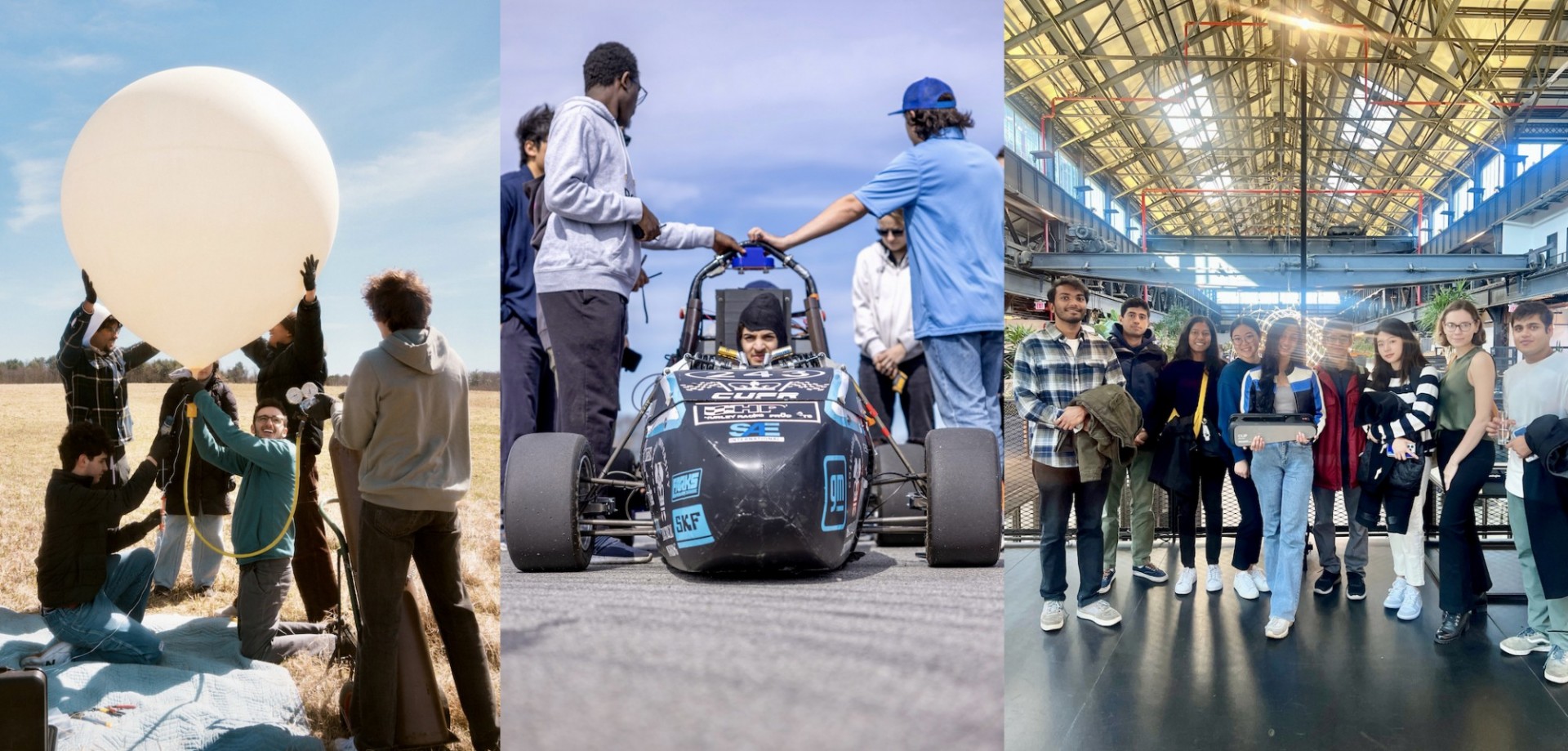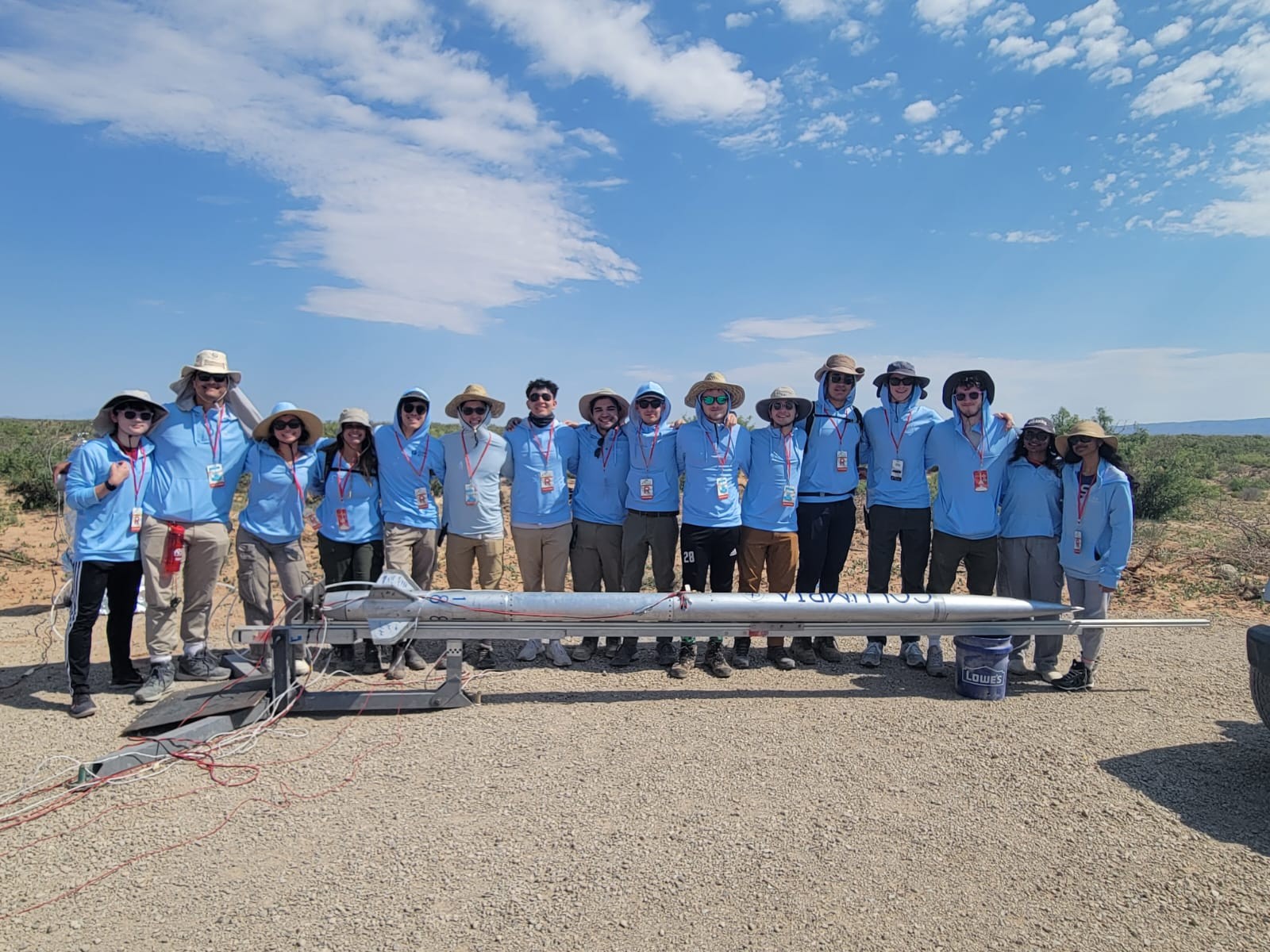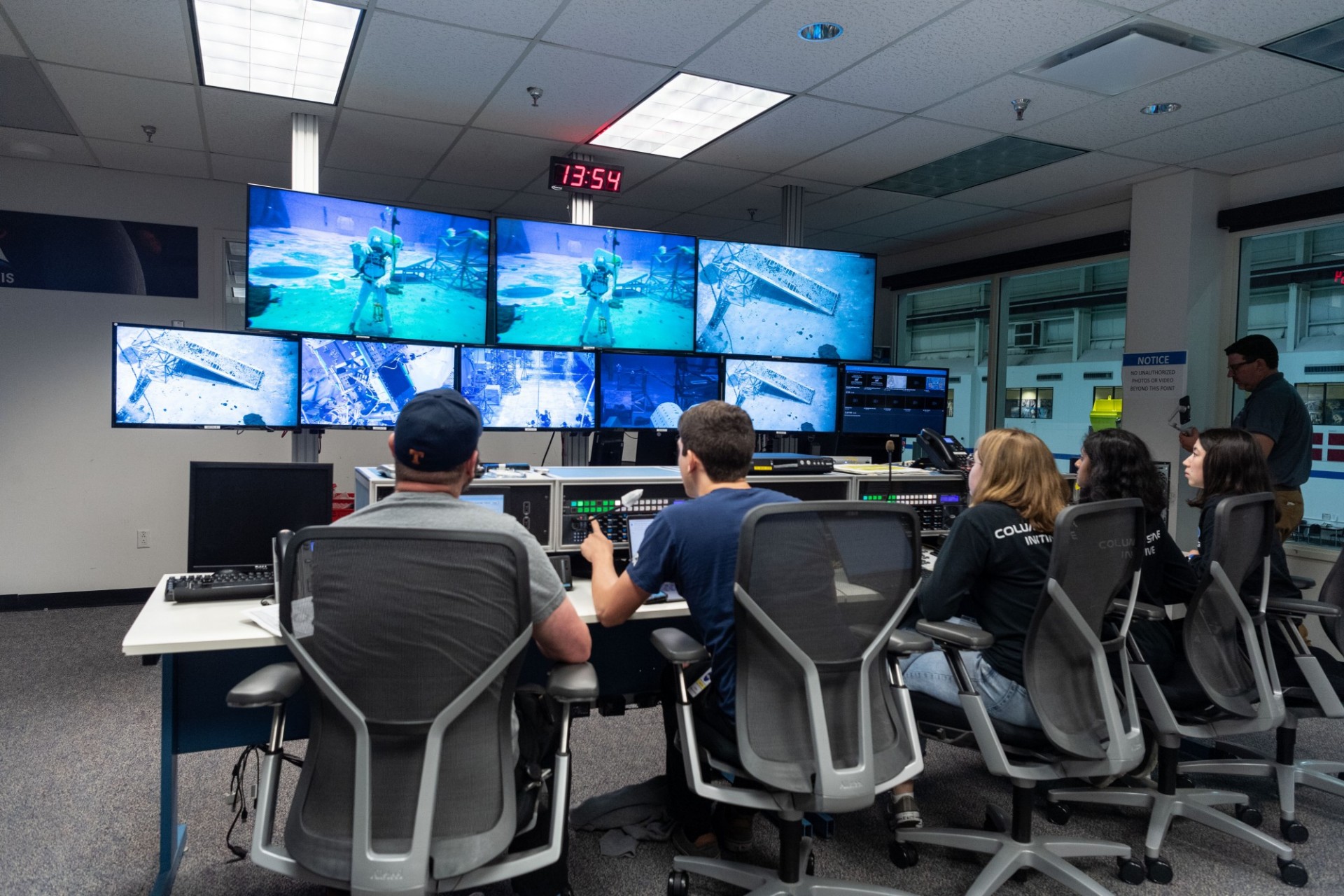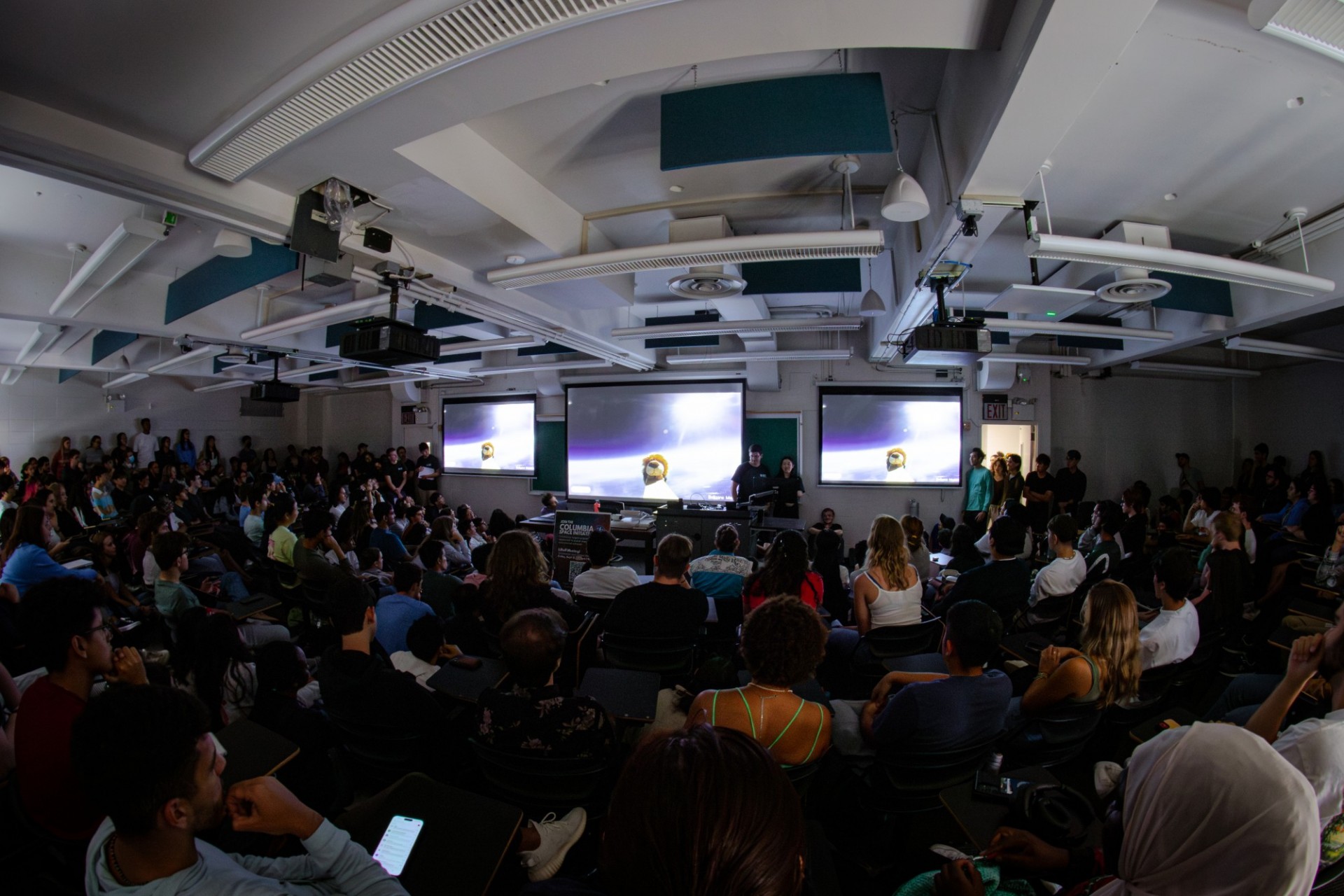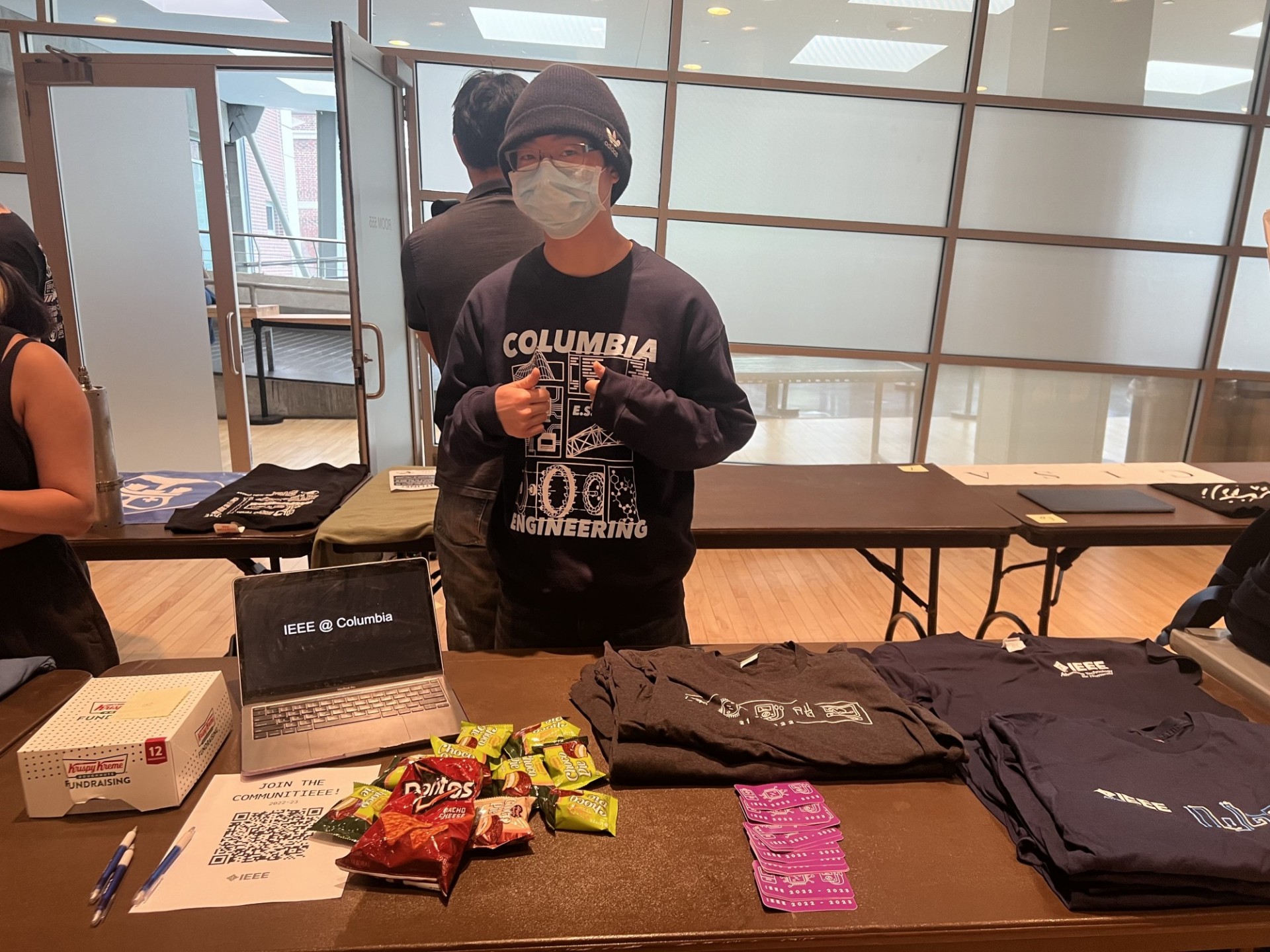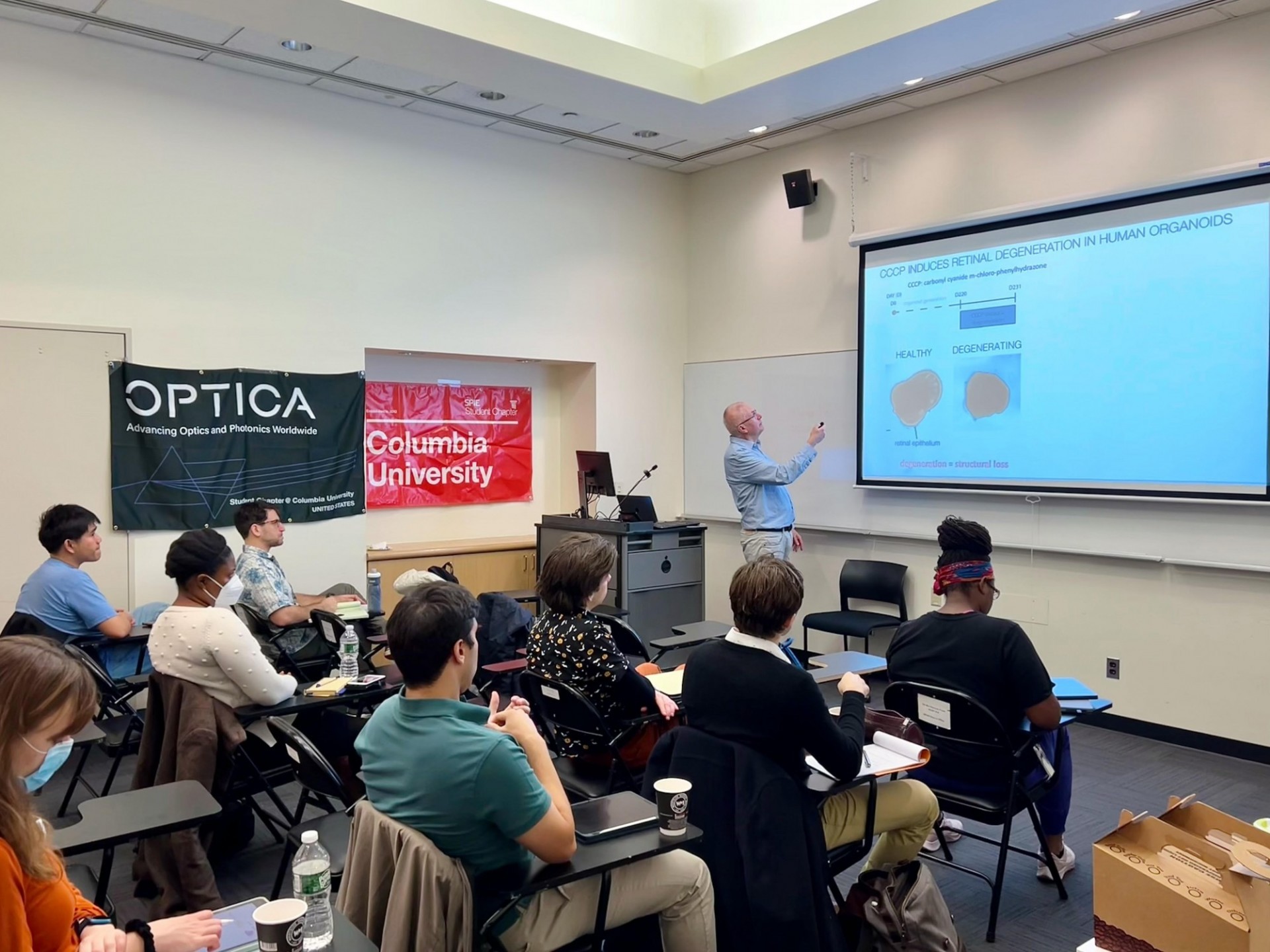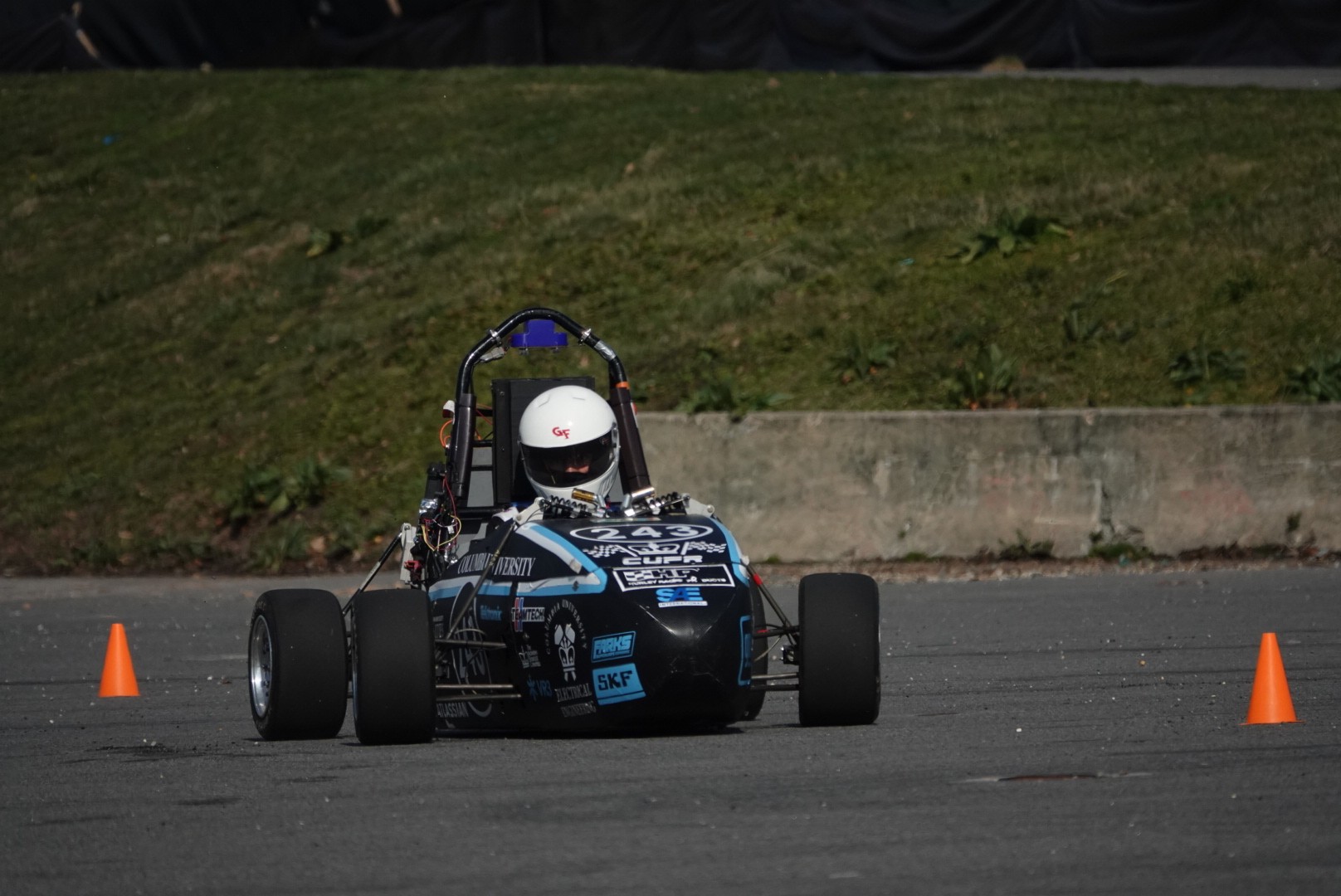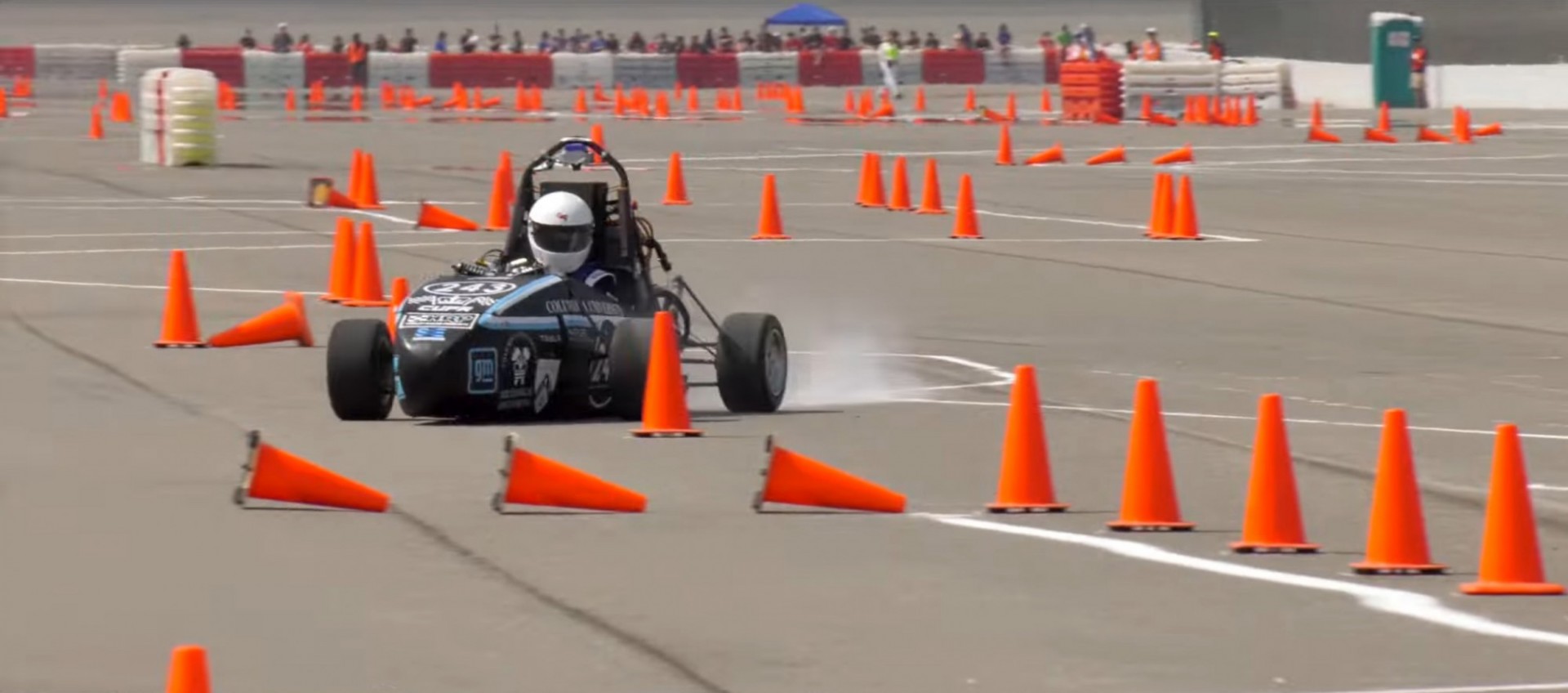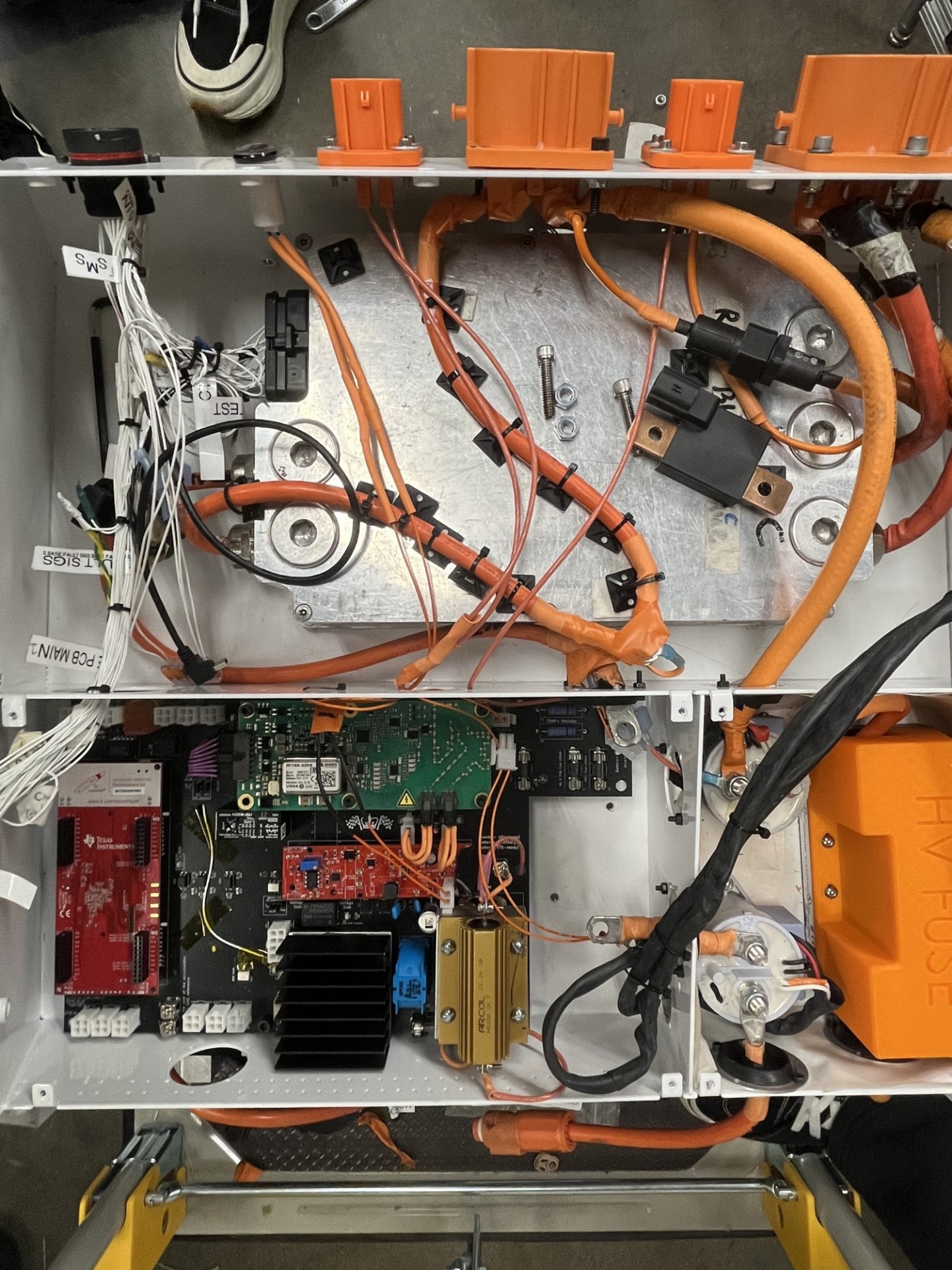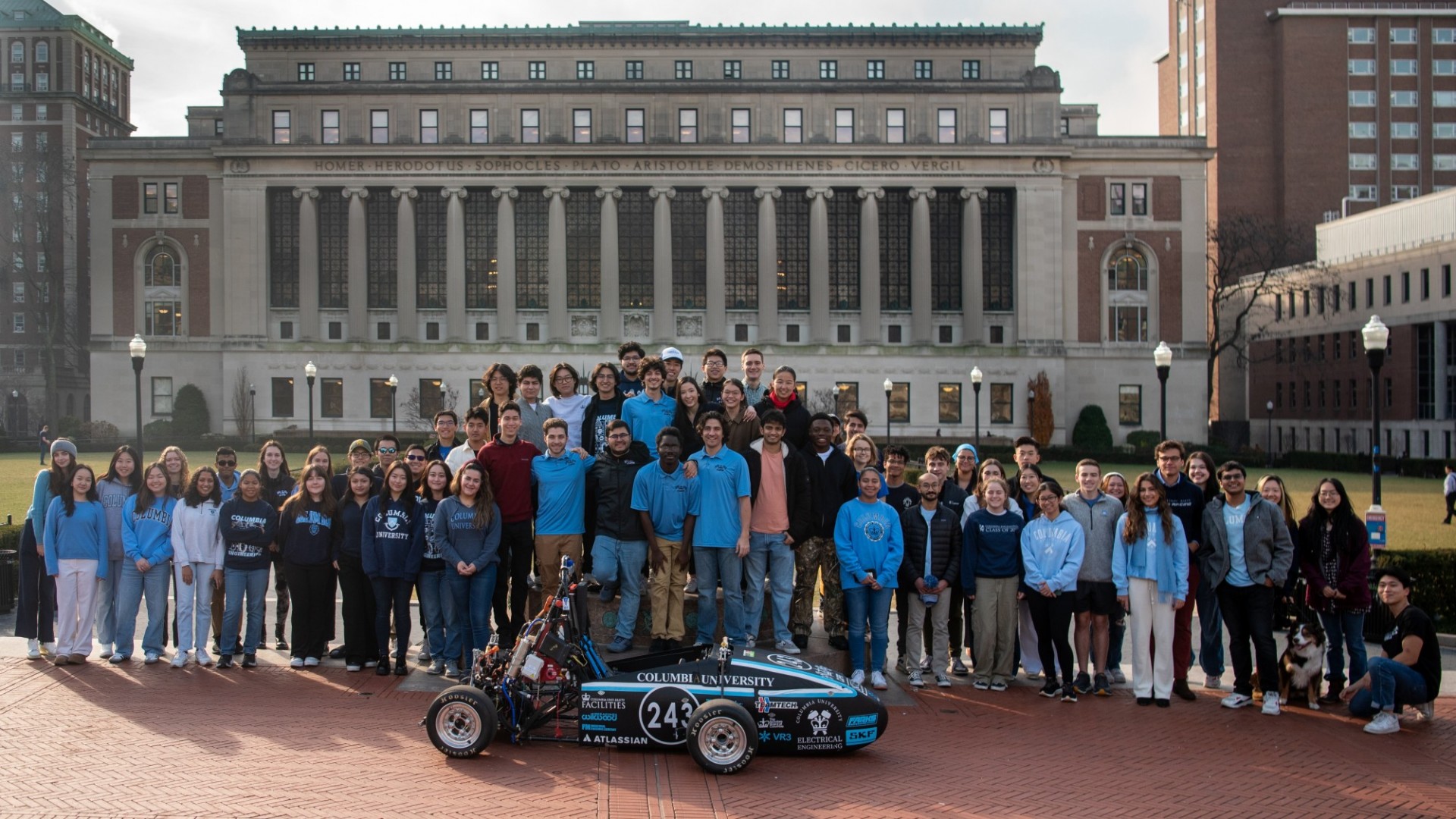Pioneer the Future with Columbia Electrical Engineering’s Celebrity Clubs
Explore how Columbia University's Engineering clubs are shaping the future of technology and community through innovative projects and passionate leadership.
At Columbia Engineering, the Electrical Engineering Department is always buzzing with ideas and innovation. Here, a lively cohort of students turns theoretical knowledge into vibrant action, leading initiatives that merge technology, community engagement, and significant personal growth. From launching their first hybrid rocket to crafting electric vehicles speeding towards sustainability, to optics enthusiasts brightening the future of STEM for high school girls, these clubs are not just participating in the future of engineering—they’re actively creating it.
Dive into the stories of the passionate student leaders steering these initiatives, where innovation isn't just a buzzword—it's a lifestyle.
Graduate Electrical Engineering at Columbia (GEEC)
Bert Steyaert (PhD EE '25, BSEE '20), the president of GEEC, is a familiar face in the corridors of the engineering building. Having transitioned from an undergraduate in electrical engineering to a PhD candidate, Steyaert embodies the spirit of dedication and continuity. "I've been around for many years," he shares, "the club manages the wants, needs, and worries of the graduate students of EE and CE, as well as brings concerns of the students to the department.”
GEEC's role extends beyond academia—it's about rebuilding connections and nurturing a supportive network for graduate students navigating the demanding world of electrical engineering.
“We’d like every coffee hour to run out of coffee; every social event to reach full capacity; every PhD student to graduate on time, and every Master's student to get a job or internship,” says Steyaert.
Looking ahead, Steyaert is excited about the potential for further growth. "I want every student in EE and CE to feel heard and helped," he says, planning more inclusive events and robust academic support sessions to enrich the GEEC community.
Q&A with Bert Steyaert
CU Electrical Engineering: Who founded GEEC, and how did you first learn about the club?
Bert Steyaert: GEEC was started by EE graduate Tingkai Liu around 2017 or 2018. I got involved after attending a post-qualification exam coffee hour in 2018, which sparked my interest. As a third-year PhD student, I work on enhancing electric drivetrains. GEEC is the governing body for EE and CE graduate students at Columbia, providing academic support, managing student concerns, and fostering a community through social events.
EE: How does GEEC support its members' professional and academic growth?
BS: GEEC offers resources aimed at both academic and professional development. We host panels, mock defenses, and lab meetings to support PhD students academically. Also, the club has quite a bit of fun with coffee hours, bar socials, and mixers with other engineering student groups like MEGA, GoBME, ChEGO, and AMPS, etc.
EE: What challenges has the club faced, and how have you overcome them?
BS: The club faces a myriad of challenges including people taking too many donuts at coffee hour and the elevators being too slow. We’d like to request a Mudd penthouse (13th floor) private elevator actually. Jokes aside, I don’t think the club has that many challenges at the present moment. The department and students are in relative harmony with each other. In the past, our biggest challenges were COVID-19, budgeting/funding issues, and just getting people to come to events.
EE: In what ways does the club support the professional and personal development of its members?
BS: There are really two sides to this, academic development and professional development.
Academically, we provide a variety of resources and events. Most of these are geared towards PhD students. These include events such as ‘Demystifying the DQE’ where we have a student panel of older PhD students field questions from younger PhD students. We also have ‘Mock Thesis Defense’ where students can practice their defense presentations to their peers. Among other events, we also have a semesterly ‘Lab Rep Meeting’ where 1-2 students from each EE lab all come to meet and discuss concerns.
Columbia Space Initiative (CSI)
Columbia Space Initiative is known to be one of the most ambitious clubs on campus. From launching rockets to 30,000 feet, to building a satellite to launch in 2027, to deploying an autonomous boat to monitor algae blooms in NYC waterways, to sending and tracking a balloon to the edge of space, CSI has been a launchpad for challenging projects.
Just like the scope of the space, CSI also offers many opportunities for its members.
Kate Lampo (BSME '25) and Will Specht (BSBE '25) are the co-presidents of the Columbia Space Initiative. With backgrounds in mechanical and biomedical engineering, respectively, they bring diverse perspectives to a club that’s all about pushing boundaries—literally to the edge of space.
“Joining the club allows us to build technical skills and pursue interests outside of our majors,” Lampo and Specht say. “Although we are a club that works on projects primarily related to mechanical and electrical engineering, we have recently worked to start and build projects that also touch on topics outside that scope.”
Q&A with Kate Lampo and Will Specht
EE: When was CSI founded and what inspired its creation?
Kate Lampo and Will Specht: CSI was established in 2015 by James Gong and Julia Di to serve the community of aerospace enthusiasts at Columbia who lacked an extracurricular outlet. Since then, CSI has grown to include over 200 members engaging in diverse projects spanning aerospace engineering, space science, and policy.
EE: What are CSI's main objectives and activities?
KL, WS: CSI aims to provide Columbia students with practical experience in space science and engineering, hosting a variety of technical projects and events. In the past academic year alone, we hosted three astronauts (Professor Mike Massimino, Drew Feustel, and Woody Hoburg), Dr. Chris Mason (who led the NASA twin study), Dr. Eliah Overbey (from Weill Cornell), Columbia Professor David Kipping, and space policy and economy experts Justus Kilian and Bartu Kaleagasi, among others. We also offer professional development events and panels to our members and connect them with opportunities in higher education and aerospace more broadly. We also facilitated travel to conferences and competitions, including NASA centers and national conferences.
EE: What has been your most impactful project or event?
KL, WS: Among our many successful projects, launching a payload to the International Space Station and winning a $300,000 NASA grant for our Cube Satellite project in 2027 are our proudest achievements. We also pride ourselves on our STEM outreach, which significantly impacts over 1000 under-resourced NYC middle school students annually.
EE: What challenges has CSI faced and how have you addressed them?
KL, WS: Our biggest challenges include member retention and knowledge transfer. We've developed a robust informational infrastructure and host "mission shopping" periods for new members to find their project fit. Leadership training and opportunities for younger members are crucial for maintaining our club's continuity and success.
Institute of Electrical and Electronics Engineers (IEEE)
Mandi Xu (BSEE '24), president of IEEE at Columbia, has transformed the club into a vibrant platform for both budding and established engineers. Under her leadership, IEEE has flourished, becoming a nexus for students seeking to bridge the gap between academia and the tech industry.
"Despite our name, our club is open to any and all engineering and non-engineering students, undergraduate and graduate, who are interested in getting more involved in technology in general,” says Xu. “We aim to foster technological innovation and excellence for the benefit of humanity.”
A defining moment for the club under her tenure was hosting a joint event with Yale IEEE. It was more than a meeting of minds—it was a sharing of cultures and ideas, laying the groundwork for future collaborations. "Doing so allowed us to partner with another university branch and see how they operate and they see how we operate,” says Xu. “Furthermore, this opportunity allowed our members to connect with Professor Bergman and Professor Kymissis and hear about graduate school opportunities from them.”
Q&A with Mandi Xu
EE: When was IEEE re-founded and what inspired its rebirth?
Mandi Xu: IEEE was revitalized in 2020 by students Ava Kim and David Xu who sought to rebuild the community by linking electrical and computer engineering students through various activities. The aim was to foster technological innovation and excellence, echoing the broader mission of SEAS and leveraging resources from the global IEEE network to cultivate a close-knit community.
EE: How does the club support its members' professional and academic growth?
MX: IEEE at Columbia hosts the Career Series, inviting companies like Morgan Stanley and Tesla to discuss career opportunities, which helps fast-track our members' applications. Academically, we benefit from the dedicated involvement of professors who guide students interested in research and higher education, alongside access to IEEE's vast resources like the IEEE Xplore digital library.
In terms of academic development, Professor Bergman and Professor Kymissis are super dedicated to IEEE and are a HUGE reason why this club has been able to grow in that direction. We have a lot of students interested in research and higher education and we offer roundtable discussion style events focused on getting into graduate school and what research to take on if you’re interested in that path.
EE: What are the goals for the club next year?
MX: Our goals include expanding membership by promoting the club’s activities on social media and through department support, increasing involvement from both undergraduate and graduate students to enhance our community's voice, and developing engaging, project-based events that enhance practical engineering skills.
Columbia Optical/SPIE
Haiqiu Yang (PhD EE '25), president of the Columbia chapter of Optica and the International Society for Optical Engineering (SPIE), takes pride in the club’s volunteer efforts, such as participating in Girls’ Science Day, which introduces young students to the wonders of science through hands-on learning.
"These activities are more than educational outreach; they're about lighting a spark of curiosity and ambition," Yang says.
Yang is deeply passionate about the power of optics to change the world. Under her leadership, the club has become a pivotal part of Columbia’s EE landscape, connecting students with the broader optics community and leading industries.
"The field of optics is like a prism, diverse and reflective of numerous possibilities including optics communications, chips, devices, materials, imaging system," Yang says. “Our objective is to unite the students who are interested in this field, provide the platform for optics-related research, volunteer, and career opportunities, as well as connect to the large communities of Optica and SPIE.”
As Yang looks to the future, she is keen on expanding the club’s industry connections, bringing more real-world experiences to members through field trips and guest lectures that showcase the practical applications of their academic studies.
Q&A with Haiqiu Yang
EE: How was the club first founded?
Haiqiu Yang: Our club was founded in 2011 by previous PhD students and is supported by Optica (formerly OSA) and SPIE, with EE Professors Keren Bergman and Christine Hendon as advisors.
EE: What are your club’s goals?
HY: Our goal is to unite students interested in optics, providing a platform for research, volunteering, and career opportunities, while connecting them with the broader Optica and SPIE communities. Key activities include hosting optics seminars, participating in Girls’ Science Day to educate primary and junior school girls, and organizing field trips to optics-related companies.
EE: What is your club’s biggest challenge right now?
HY: The main challenge is raising awareness of our club within a niche field. We've responded by participating in the EE department's new graduate welcoming event to attract students and developing our leadership to effectively reach interested groups.
EE: In what ways does the club support the professional and personal development of its members?
HY: We provide club members the chance to go on industry visits with long-term partners. Specifically, club members received multiple scholarships from SPIE, for their contribution to the optical research and student community: Yu Gan, Diana Mojahed, Kevin Kwock, and Haiqiu Yang got SPIE Optics and Photonics Education Scholarship in 2014, 2019, 2020 and 2022, respectively. Rajinder Singh-Moon received the SPIE Officer Travel Grant Award in 2017. Kishore Padmaraju received the SPIE John Kiel Scholarship in 2013.
Formula Society of Automotive Engineers (FSAE)
Mert Saygi (BSEE '24), president of FSAE, embodies the spirit of hands-on engineering. His passion for race cars and engineering came to life at Columbia, where he led the development of electric race vehicles for national competitions. “Each year is a challenge, a chance to innovate and improve,” Saygi says, standing in the workshop amidst tools and car parts.
FSAE’s transition to electric vehicles marks a significant shift towards sustainable engineering, a move Saygi views as both a responsibility and an opportunity. “We’re not just building cars; we’re building the future,” he asserts, his commitment echoing through the club’s basement studio.
The club’s impact extends beyond engineering, shaping members' professional lives as they engage with industry leaders at competitions. “It’s about more than just winning; it’s about proving our capabilities and opening doors,” Saygi reflects, hopeful about the future he and his team are driving towards. In the time of the upcoming Formula SAE contest in June, Sayigi and his team are working hard to take pride home to Columbia.
Q&A with Mert Saygi
EE: Can you tell us about the founding and evolution of your club, and your personal journey within it?
Mert Saygi: The club started in the 1990s when a group of mechanical engineering students at our university decided to build go-kart-style cars using old motorcycle engines. Over time, as interest grew, the club became more formalized, shifting focus to building cars specifically for the Formula SAE competition, adhering to its strict regulations. We started with combustion engines and moved to designing electric vehicles in 2020, with our first electric model competing last year. Personally, I joined the club as a freshman, drawn by its reputation for hands-on engineering. Despite the challenges of COVID-19 and remote learning, I remained actively involved, transitioning from design work to building cars once we returned to campus. My commitment deepened each year, leading to my current role as president. This position has allowed me to lead projects and push the boundaries of what our team can achieve, especially as we navigate the complexities of engineering safer, faster electric vehicles to better compete in national events.
EE: What has been the most challenging aspect of transitioning to electric vehicles for the competitions?
MS: Transitioning to electric vehicles has been challenging primarily due to the new technical requirements and the need for different expertise. Unlike combustion engines, electric vehicles require a deep understanding of electrical systems, battery management, and software integration. The biggest hurdle was setting up a reliable system to test these new technologies effectively, especially in an urban setting like New York City where space is limited. We had to transport our vehicle to a remote site just to perform essential tests, which was not only time-consuming but also introduced uncertainties about vehicle durability and performance under competition conditions.
EE: How does the club support its members' professional and academic growth?
MS: The club serves as a real-world engineering lab that not only complements our academic curriculum but also prepares us for the industry. By working on actual vehicle design and construction, members gain practical skills in engineering, teamwork, and project management. We regularly interact with industry professionals through workshops and guest lectures, providing networking opportunities and insights into the engineering field. Additionally, our participation in competitions exposes members to recruiters from top companies like Tesla and SpaceX, often leading to internships and job offers.
EE: What’s your team’s goal for the upcoming Formula SAE contest?
MS: Our goal is to refine our designs to improve reliability and performance in competitions, especially focusing on electric vehicle technology. We also aim to expand our outreach by involving more students from different engineering disciplines to foster a more interdisciplinary approach to our projects. This will not only enhance the technical robustness of our vehicles but also enrich the educational experience for all members. In the long term, we're exploring sustainable practices in vehicle design to align more closely with industry trends towards environmental consciousness. I also want to thank our faculty advisors Prof. Josh Browne, Jeffrey Kysar, and Matthias Preindl who are the cheerleaders along our way.
Each of these clubs, with its unique focus and driven leaders, contributes to a larger narrative of innovation, community, and growth at Columbia University. Here, engineering is more than a subject—it’s a journey of discovery, collaboration, and impact.
